Vorsprung Secus Fork Air Spring Upgrade
Test Location: Gunnison / Crested Butte, CO, and others
Test Duration: 8 months
Compatibility: Many newer Fox and RockShox forks (see here for details)
Blister’s Measured Weight (added weight, Fox A3 version): 132 grams
MSRP: $425–$435 CAD ($350.91–$359.17 USD at the time of publication)
Bolted to: 2021 Fox 40 Factory, 2021 Fox 38 Factory, & 2021 RockShox ZEB Ultimate
Reviewer: 6’, 165 lb (183 cm, 74.8 kg)
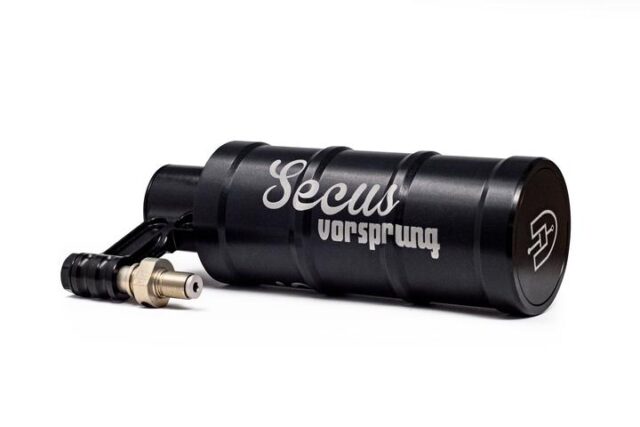
Intro
Mountain bike suspension has come a long way and there are a lot of excellent forks out there right now (many of which we compared in our fork roundup). That said, there will likely always be room for improvement, and in addition to the updates we see from suspension manufacturers, there are also folks like those at Vorsprung Suspension, who take matters into their own hands and offer ways to potentially improve the performance of your current suspension with various upgrades.
Vorsprung’s first foray into modifying fork air springs came with the Luftkappe, back in 2016. Essentially a replacement piston that increases the volume of the negative air spring, the idea with the Luftkappe was to reduce the initial spring rate to create better small-bump sensitivity, while increasing the spring rate deeper in the travel for better midstroke support and bottom-out resistance. I’ve used a Luftkappe in a couple of different forks now, and it does what Vorsprung claims. But, as we discussed with founder Steve Mathews on Episode 60 of our Bikes and Big Ideas podcast, the Luftkappe concept has its limits.
That’s where the Secus comes in — Vorsprung’s more advanced fork air spring modifier. I’ve been testing the Secus in a couple of different forks now, and have come away tremendously impressed. Here’s why:
The Design & Background Info
Before we go too deep into how the Secus works, it would probably help to start with a refresher on how air springs work in mountain bike suspension.
Fair warning: this part is going to get pretty nerdy. If you’re only really interested in what the Secus does and not how it does it, feel free to use the review navigation bar and skip down to the “On-Trail Performance” section. If you’re curious, though, let’s dig in.
First, let’s walk through how a modern air spring works in a mountain bike fork. The main air chamber is referred to as the “positive” spring. It does the job that you’re probably imagining when you think of the spring in a fork — it’s the thing that you’re pushing against and compressing when you push down on the handlebars.
Air forks, however, add a second spring to the picture — the “negative” spring. Most modern forks, and all of the ones with which the Secus is compatible, use an air negative spring (i.e., a second chamber of pressurized air), though coil negative springs are sometimes used as well. The negative spring’s function is to oppose the positive spring, mostly at the top of the stroke, predominantly in the name of improving small-bump compliance.
The negative spring works exactly opposite to the positive spring: as the fork is compressed, the negative spring extends, and vice versa. In the case of an air negative spring, this means that its volume is lowest (and therefore its pressure is highest) when the fork is topped out / fully extended, and its volume increases (reducing the negative spring pressure) as the fork is compressed. The effect of the negative spring is therefore highest at topout and mitigates as the fork compresses.
The need for a negative spring in an air fork comes down to the fundamentally different behavior of an air spring vs. a coil spring.
A coil spring has what’s known as a “free length” — a fixed length in its “relaxed” (i.e., unloaded / unweighted) state, and at that length, it exerts no force to extend itself. If you remove the spring from a coil fork, it doesn’t try to extend longer until it runs into the opposite walls of your garage. But that is what the compressed air in the positive chamber of an air spring wants to do, so it is exerting force to extend the fork, even at the fully extended position. A coil-sprung fork takes little force to begin to compress the spring for exactly this reason. An air-sprung one without a negative spring would require huge amounts of force to get moving in the first place, and small-bump sensitivity would suffer badly as a result.
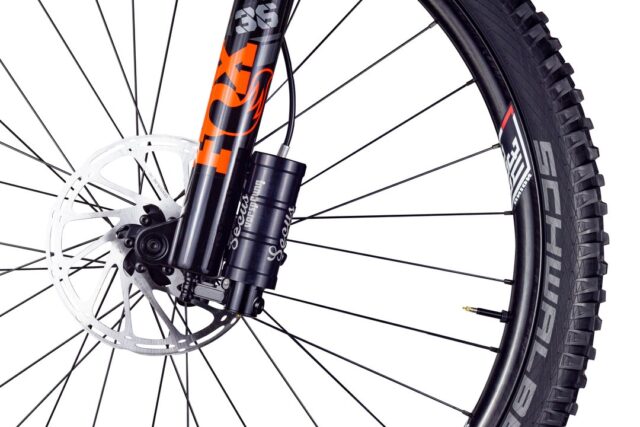
The relative volumes of the positive and negative springs are also important. The smaller the volume of the negative spring, the more rapidly its effect trails off as the fork compresses. If the negative spring is very small, its pressure drops very quickly as the fork starts to compress, and its effects are only significant in the very earliest part of the stroke. The larger the negative spring, the slower its pressure falls off, and the deeper in the stroke it has a significant effect.
The volume of the negative spring has a dramatic impact on the spring rate curve in an air-sprung fork (or shock). By the “spring rate curve,” we mean a graph of how much force it takes to compress the spring per a unit of displacement at each point in the travel. Coil springs are essentially truly linear — which is to say that it takes the same amount of force to compress a coil spring from 0 to 10 mm as it does to go from 10 to 20 mm, or 100 to 110 mm, and so on. This isn’t the case for air springs, though — air springs, in general, have a spring rate curve that’s roughly U-shaped. For the sake of example, let’s say we’re looking at a 160mm-travel air-sprung fork. In a typical layout, it takes considerably more force to compress the spring from 0 to 10 mm of travel than it does to go from 30 to 40 mm of travel, but that spring rate will increase again deep in the travel.
The downsides of this arrangement are pretty easy to imagine — if your fork is stiffer right off the top than it is around the sag point, small bump sensitivity suffers, as does midstroke support. If you have to set the fork up relatively soft to eke back sensitivity, you’ll lose midstroke support; if you firm up the fork to get that support back, you lose small-bump sensitivity.
Bigger negative spring volumes mitigate this effect to some extent, but the overall effect described above holds true for any realistic, practical negative spring size, given the physical constraints imposed by a typical fork design.
Below, you can see a graph showing the theoretical effects of increasing the negative spring volume.
[These values are hypothetical (ignoring things like seal friction and the like) and aren’t lifted exactly from any fork in particular, but represent a realistic range of values for a single-crown Trail / Enduro fork. It’s also worth noting that these graphs assume isothermal compression (i.e., they assume that the heat generated by compressing the air in the spring is dissipated through the fork and its temperature remains constant). Vorsprung says that this is a roughly realistic scenario sometimes. Something approaching adiabatic compression (i.e., no heat exchange, temperature rises under compression) is also sometimes possible, which would change the exact details of these graphs a bit, but they’re still useful to show the overall trends that we’re talking about here. For this graph, we’ve adjusted both air pressure and volume spacers settings to produce consistent sag across all the setups, and a similar amount of total force needed to bottom them out.]
Larger negative springs bring the air spring curve closer to that of a coil spring, but have their limitations. As we talked about with Vorsprung founder, Steve Mathews, in Episode 60 of Bikes and Big Ideas, if you make the negative spring in a fork bigger, you’re inevitably going to have to take volume away from the positive spring. That creates an effect similar to that of adding volume spacers — there’s only so much room inside of a fork leg, after all, and especially in longer-travel single crowns, that real estate is at a premium. Push things too far, and you’ll get the benefits of a larger negative spring, but you’ll also make the spring rate higher deeper in the travel and pretty quickly end up with a fork that makes it impossible to use full travel.
Or, at least you have those limitations if you keep the spring contained entirely within the fork leg. And that’s where we get to the Secus.
The goal of the Secus is to produce a much more linear, coil-like spring rate through the first ~60% off the stroke, but with a gentle, air-like ramp up for bottom-out control. So how does it go about that?
The Secus performs three basic functions:
- It greatly increases the volume of the negative spring early in the stroke.
- It closes off that additional negative spring volume partway through the stroke, returning the negative spring volume to (nearly) stock.
- It effectively increases the volume of the “free” air in the spring side of the lowers (i.e., not part of the air spring itself) to reduce the amount of ramp-up that you get from pressure buildup in the lowers.
Let’s go through those point by point. First, the Secus dramatically increases the negative spring volume, and because it does so by adding a canister outside of the fork leg, it doesn’t impose the same limitations as stuffing a bigger negative spring inside the fork leg, in terms of taking away volume from the positive spring. Pretty straightforward.
Second, the Secus closes off almost all of the additional negative spring volume partway through the stroke. This is accomplished with a pressure-sensitive valve, which closes once there’s a sufficient difference between the initial negative spring pressure (i.e., the pressure when the fork is topped out) and the current, instantaneous negative spring pressure as the fork compresses. Remember, as the fork compresses, the pressure in the negative spring decreases, due to the volume of that chamber increasing. The larger the volume of the negative spring, the slower the pressure drops off per amount of fork compression.
All this means that a Secus-equipped fork has a huge negative spring volume earlier in the stroke, which helps flatten out the spring rate in that portion of the curve that’s typically decreasing in most air-sprung forks (the left, steeply-declining portion of the “U”) and then has a more typical negative spring volume in the midstroke, where the spring rate usually falls off in an air-sprung fork.
Finally, the Secus also effectively adds to the volume of the air in the spring side portion of the fork lowers, completely outside of the air spring itself. The degree to which this is true depends somewhat on the fork in question, but as a fork compresses, pressure builds up in the lowers — the air spring side, especially — and causes the fork to ramp up more aggressively. These effects aren’t shown in our theoretical graphs above, which only account for what’s going on inside the spring itself. The idea here is to moderate that ramp up, to open up a wider range of tuning options.
Vorsprung doesn’t publish a spring rate graph for the Secus, but show the following force plot for the Secus (installed in a 180mm-travel RockShox Lyrik, in this case), which does show the Secus-equipped fork as coming remarkably close to emulating a coil spring for the first ~60% of its travel, before gently and smoothly ramping up deeper in the stroke, for improved bottom-out resistance.
Vorsprung says that the Secus “delivers the first and only air spring system to really come indistinguishably close to the linear spring rate of a coil fork for the entire first 2/3rds of its travel, with the advantage of a gentle end stroke progression to prevent bottoming without the ‘wall of force’ harshness that excessively progressive springs create.”
Negative springs have been growing larger in forks (and shocks) for some time now, as manufacturers have realized the benefits of smoothing out air spring curves, but the Secus promises to take the concept much further than is realistically possible with a more conventional spring design.
It’s worth noting that Vorsprung also offers the Smashpot — a fork coil spring conversion with added hydraulic bottom-out control. We haven’t yet tested the Smashpot, but in theory, it should offer reduced friction compared to the Secus, due to the elimination of the air spring seals, in exchange for a bit of weight and the loss of easy tuning via a shock pump that you get with an air spring.
Compatibility
There are four versions of the Secus available, for use with different forks. The Secus canister itself is the same across the board, but the foot stud differs, and the Fox A3 version (for the 40) also requires a replacement base to the air piston. Foot studs to convert the Secus for use on different forks are available separately. Here’s the overall breakdown for the Secus’ compatibility:
- Secus w/ Fox A1 Foot Stud:
- 2018+ Fox 32, 34 and 36
- 2019+ Marzocchi Z1
- (Fox Step-Cast forks and those with recessed foot nuts are not compatible)
- Secus w/ Fox A2 Foot Stud:
- Secus w/ Fox A3 Foot Stud:
- 2018+ Fox 40 (The Fox A3 version shares the foot stud with the Fox A1 version, but adds a 40-specific air piston base plate)
- Secus w/ RockShox A2 Foot Stud:
- 2014+ Revelation / Pike
- 2016+ Lyrik / Yari
- 2021+ ZEB
- 2019+ Boxxer
- (Pre-2019 Revelation, Pike, Lyrik, and Yari require a Debonair B1/B2 air shaft to be compatible; Debonair C1 air shafts are compatible but require a replacement seal head, which Vorsprung can provide.)
[The above overview covers compatibility in broad strokes, but Vorsprung’s website covers the finer points in more detail. Please see the compatibility details at the bottom of the Secus product page for all the specifics.]
Installation and Service
Installing the Secus is straightforward for anyone who’s comfortable performing a lower-leg service on a fork, but does require a set of 10 mm shaft clamps and a bench vice to change the foot stud. Vorsprung has the required shaft clamps available as an add-on with a Secus purchase if you need them. We won’t go into all the details here, but Vorsprung has very good instructions on their site.
In short, installation of the Secus requires removing the fork lowers and replacing the foot stud at the bottom of the air shaft with a custom version supplied with the Secus. Depending on the version, you may also need to replace the air piston at the other end of the spring shaft. You then reassemble the fork as normal and install the Secus canister onto the new foot stud, once the lowers are back on.
For setup, the only added step is that you need to press the gold pressure equalization button on the bottom of the Secus after setting air pressure. As a baseline, Vorsprung recommends starting with about 20% more air pressure than you previously ran, and I found that guideline to be roughly accurate.
I installed the Secus in both a 2021 Fox 40 and 2021 Fox 38; the process is essentially the same and quite easy, apart from the 40 also requiring a swap of the air piston base plate. Vorsprung sells a tool specifically for that purpose, but a green Park pin spanner and a heat gun to soften the Loctite got the job done for me.
Secus installation is easily reversible, should you wish to do so for whatever reason. The canister is the same across all models; only the foot stud and maybe the air piston differ, and replacement parts are readily available, making it fairly easy and inexpensive to move the Secus between different forks. Vorsprung also sells replacement seals for the Secus as well as publishing specs for the individual seals, and replacing them is extremely straightforward. Vorsprung recommends servicing the Secus every 200 hours of ride time, and having a Secus installed doesn’t significantly change the lower-leg service procedure for any of the compatible forks.
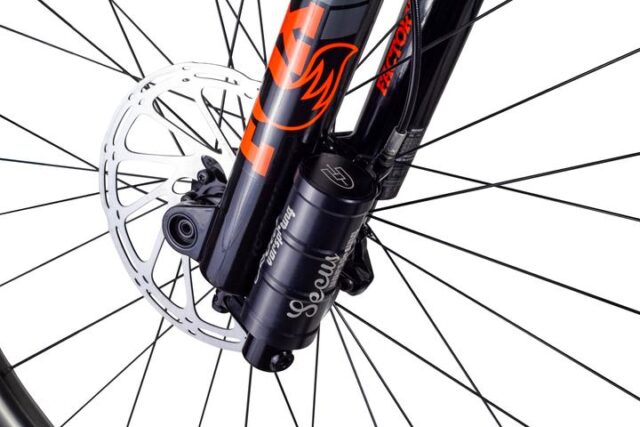
On The Trail
Alright, now let’s get into what all of this actually translates to when you get done looking at graphs and start riding your bike with the Secus installed.
Simply put, the Secus feels like it does exactly what it’s advertised to do — make the initial portion of travel in an air-sprung fork more linear and coil-like, while still offering the ease of tuning and bottom-out control of a typical air spring.
You’ll want to run considerably more air pressure with a Secus than without. Vorsprung recommends ~20% extra as a starting point and I found that to be roughly accurate, especially in the Fox 38; in a Fox 40, I wound up preferring a slightly smaller increase. With the Secus installed, a given pressure setting will produce an overall softer fork (i.e., 100 psi in a Secus-equipped fork will be softer in an otherwise identical one without the Secus). But the Secus also allows you to run an overall slightly firmer setup for further improvements to midstroke support, with fewer compromises to small-bump sensitivity and the ability to access full travel as you’d have with a conventional air spring.
Or if you’d prefer to emphasize better small-bump sensitivity over better midstroke support, the more linear initial spring rate of the Secus-equipped fork allows for an overall slightly softer setup off the top, while still being able to maintain midstroke support and bottom-out control.
Tuning a Secus-equipped fork isn’t fundamentally different from any conventional air-sprung fork, but the window in which you can operate before one aspect of performance or another really starts to suffer is much wider. It lets you tune for more midstroke support without hurting small-bump sensitivity, or aim for the reverse, or achieve a little bit of both. It’s a fundamentally better air spring system, and how you want to set up the fork up / what you want to take advantage of is up to you.
Vorsprung does note that the Secus makes a bigger difference in single-crown forks than dual-crown ones, and that was certainly borne out by my experience using it on both a Fox 38 and Fox 40. All of the same advantages are present in both, but just to a slightly lower degree on the 40 — and that makes sense. With the added room inside of a dual-crown stanchion, fork manufacturers have more room to make bigger negative chambers, and the larger lower legs aren’t as susceptible to the aggressive ramp up from trapped air as smaller ones. Those are the two things that the Secus is designed to address, and it’s no surprise that it just makes for a more subtle change in the 40. The Secus is still a worthy upgrade on a 40, but its effects were appreciably subdued compared to the 38.
So are there any downsides? Not many. Vorsprung has what might be the best “Cons” section of any manufacturer’s FAQ page that I’ve recently seen, which makes the following (excellent) points:
- Costs more money than not having it.
- 130 g is still more than 0 g.
- Can be damaged if you have it, can’t be damaged if you don’t.
In what is a pretty rare case, those downsides listed by Vorsprung are also basically the only ones I can identify, too.
On that last point, Vorsprung does offer a 12-month crash replacement policy for Secus owners. The canister is exposed on the outside of the fork, and I’m sure you could potentially damage it with an impact. That said, it’s mostly tucked in behind the fork leg and it’s not like people are going around puncturing their fork lowers all the time. Yes, it can happen (and yes, I’ve done it, once) but it’s far from a common occurrence. I put a couple of small scuffs on the outside of the Secus in my time on it but they’re merely cosmetic, and at no point did I feel like I was coming close to doing any real damage to it.
Those details aside though, there’s absolutely nothing about the performance of the Secus that isn’t markedly better than a stock air spring.
While the Secus does add a pair of moving seals to the fork, they’re not directly tied to the fork’s movement (i.e., the fork can compress without them sliding) so they effectively don’t add any friction to its movement. All the same adjustments that you’re used to with an air-sprung fork remain, and tuning is no more complicated than stock. The Secus just puts you at a fundamentally better baseline to work from and opens up a wider range of possibilities for how to set up the fork, without introducing any major shortcomings to its performance.
I think the biggest benefits of the Secus will be felt by people — like me — who care a lot about midstroke support and generally find themselves trying to eke as much as possible out of their forks without diminishing their performance in other areas. That said, I also truly don’t think that there are any performance downsides to the Secus compared to a stock fork, no matter how you prefer to set up your suspension. It’s a very clever, very impressive offering.
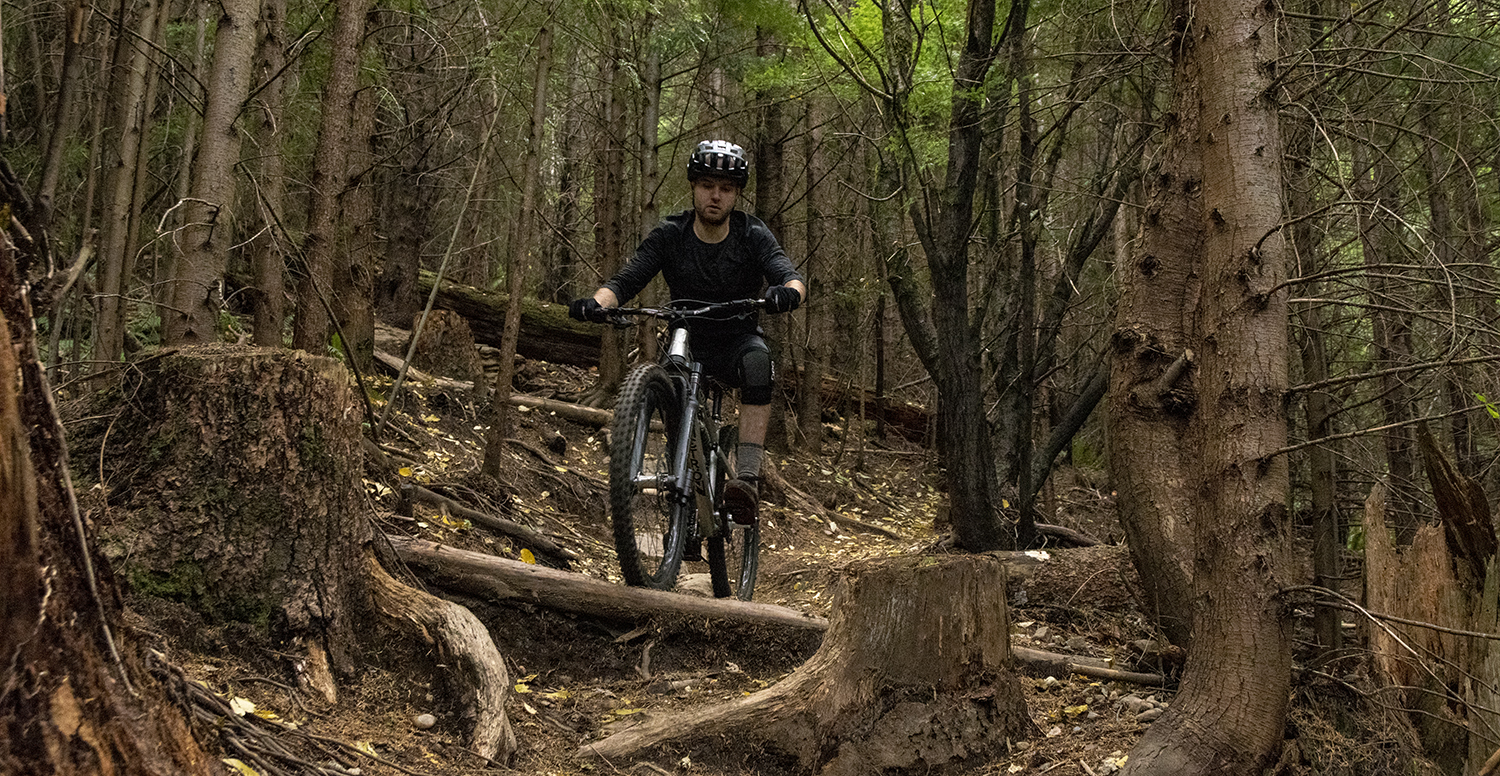
Update — 11/8/2021
After using it on a Fox 38 and Fox 40, I’ve now spent a lot of time with the Secus installed in a RockShox ZEB Ultimate, and it’s continued to be impressive there, too.
Long story short: everything about what the Secus does and how it accomplishes it carries over from the pair of Fox forks that I initially tested it on — both midstroke support and small-bump sensitivity are notably improved.
But in my option, that makes for an even bigger improvement in the ZEB. As I wrote in our full review of the ZEB, I think the Charger 2.1 damper that RockShox uses in the ZEB Ultimate is very good, and the chassis is outstanding. But the midstroke support from the air spring in the stock fork leaves a bit to be desired (especially for my personal preferences), and the Secus makes a tremendous difference.
And that makes sense. The air spring designs in the Fox 38 and RockShox ZEB are fundamentally very similar. They do differ in terms of the finer points — exact sizes of the positive and negative air chambers, and the location of the transfer port in relation to the topout bumper — and those differences do make for significant differences in their on-trail performance. But the concepts behind their designs are effectively the same, so it’s no surprise that the Secus does about the same thing to both. Because the ZEB has more room for improvement (at least for my preferences) when it comes to midstroke support, the difference the Secus makes is even more dramatic.
Comparing stock forks, I pretty clearly prefer the Fox 38 to the RockShox ZEB. The 38 is both heavier and less stiff, but the lack of midstroke support from the ZEB’s standard air spring is a big downside in my book. Regular readers of my fork reviews won’t be surprised to hear that I care a whole lot about midstroke support, and think that it’s a bigger deal for me than it is for a lot of people — we’re into the realm of individual preferences here, after all. But the Secus is impressive enough to flip the script. It addresses my midstroke support complaint thoroughly enough that the lower weight and (especially) the stiffer chassis of the ZEB win out for me if we’re comparing both forks with the Secus installed.
I’m also pleased to announce that I’ve got a Smashpot on the way from Vorsprung and will be able to compare the company’s two flagship spring upgrades back-to-back. So stay tuned for that review to come.
Bottom Line
The Secus clearly fulfills its promise to improve the performance of air-sprung forks.
It offers better small-bump sensitivity, better midstroke support, and all the tunability of a standard air spring — without adding friction or making setup more difficult. It’s not cheap, adds a modest amount of weight, and could theoretically be damaged by an impact. But a Secus-equipped fork clearly performs better than one with a stock air spring — especially in a single-crown fork, where the designers are subject to more packaging / physical limitations for their spring designs than in a dual crown. The Secus is an impressive product — one that took a great deal of creativity and ingenuity to come up with — and one that absolutely delivers on its claimed performance benefits.



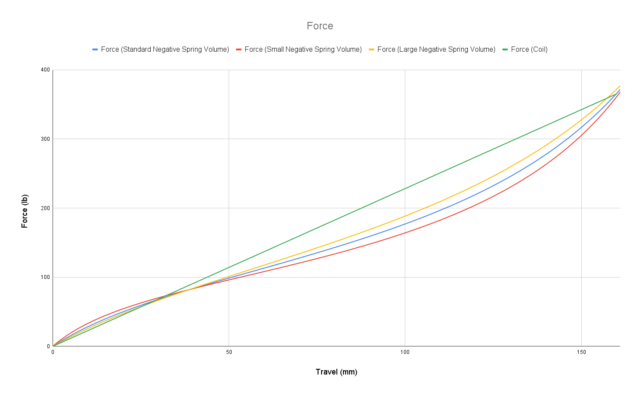
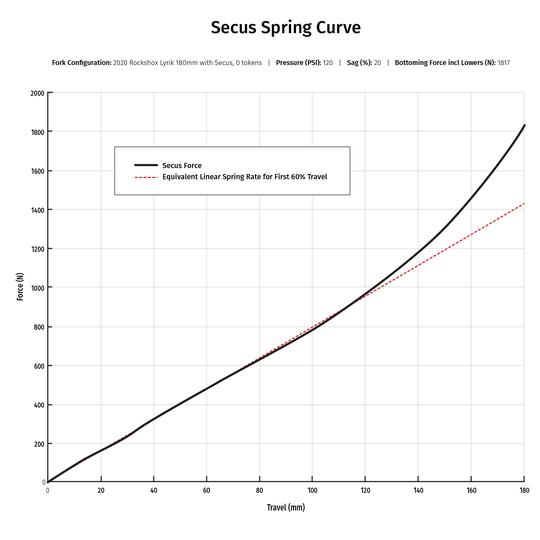

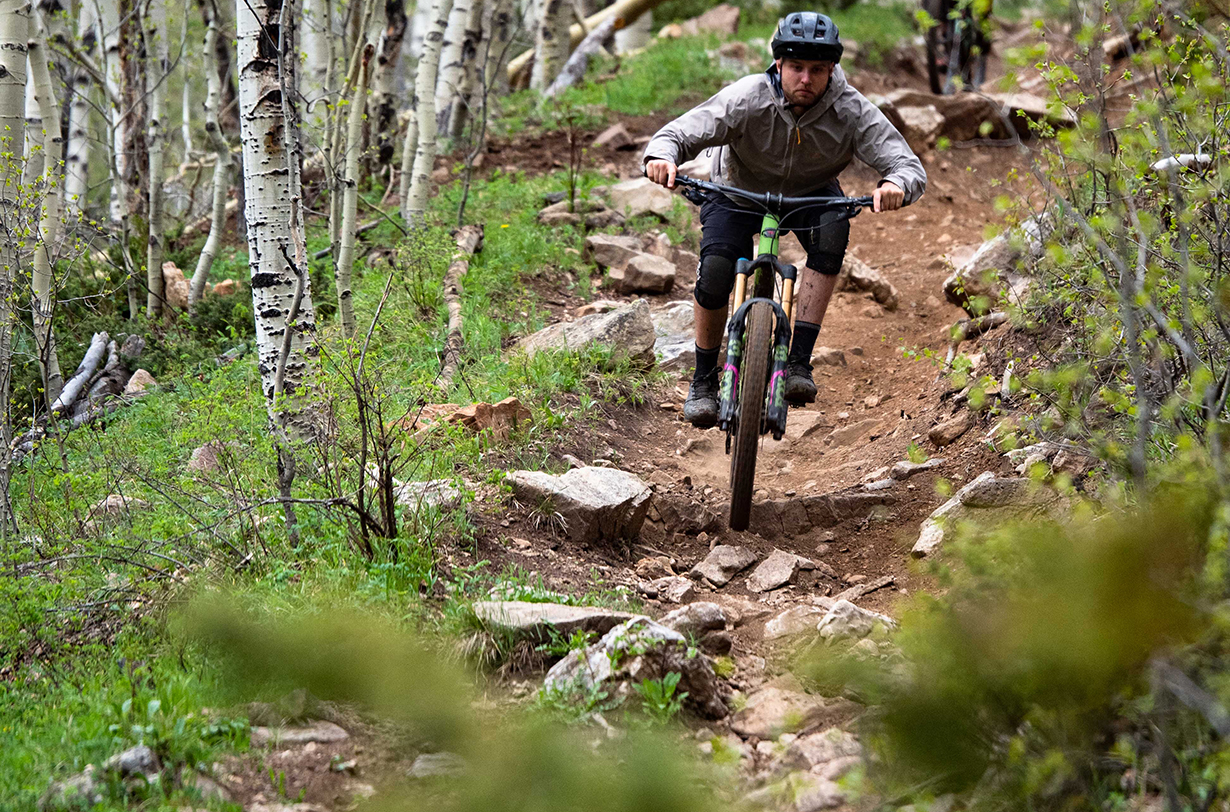
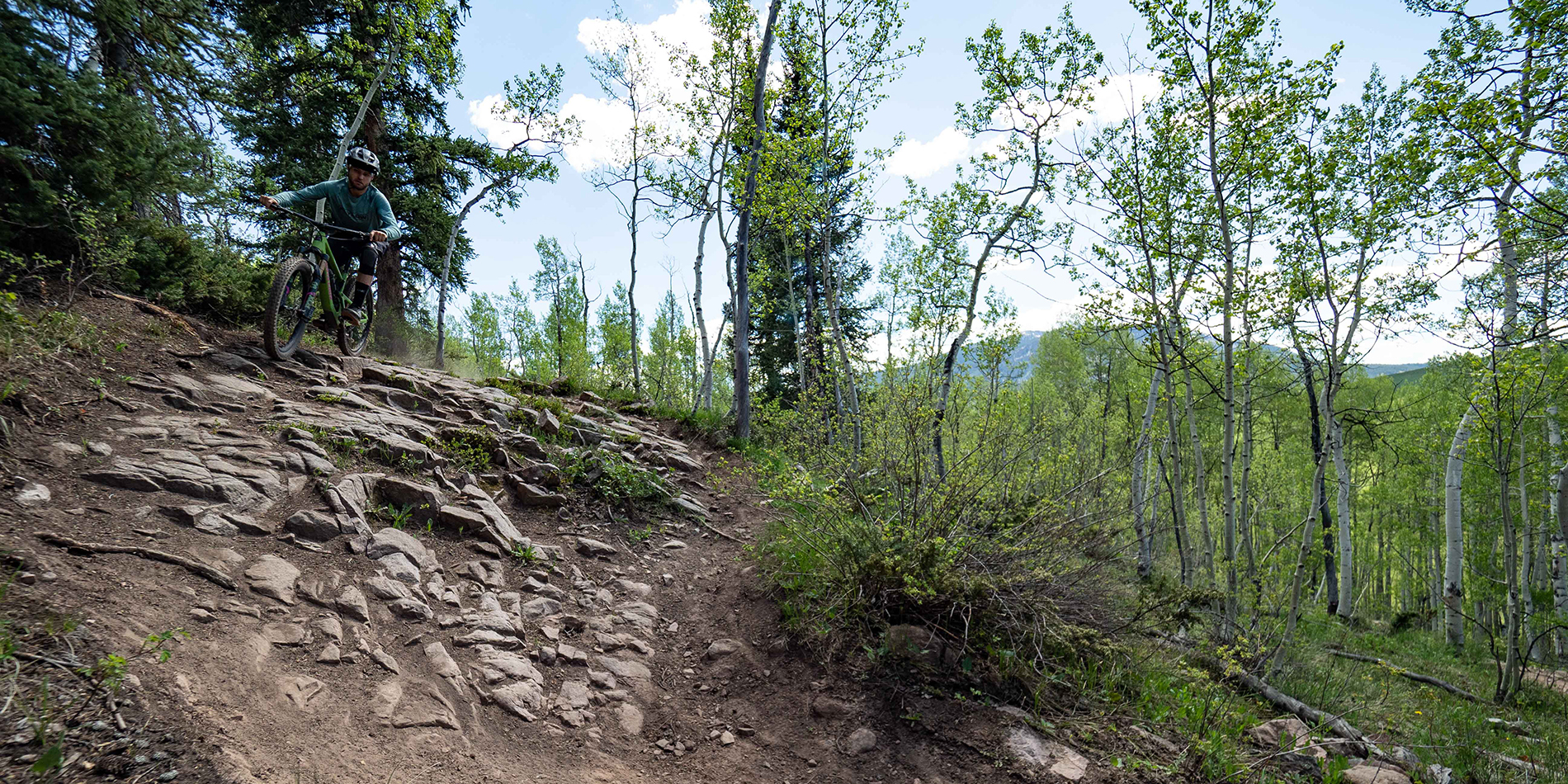

Great review of an intriguing product. I’m coming at things from the other end of the “desire spectrum” than you, David. Small bump sensitivity is all important to the riding I do. Does this really overcome an air fork’s deficiency in that area, maybe taking you halfway from a stock air fork to a coil fork?
Thanks!
It definitely helps. The Secus can’t change the fact that an air spring is going to have more friction than a coil, but it does a really good job of softening the initial part of the spring curve, and that goes a long way.
Thanks. Leaning towards going this direction.
On something like a zeb or boxxer, forks with great small bump sensitivity(large negative air springs already) would this really improve the lack of mid stroke support?
It should. I haven’t taken exact measurements, but it’s not like the negative chambers in the ZEB/Boxxer are wildly bigger than the 38/40, respectively. And lightening the spring curve both early and late in the stroke lets you run a firmer spring rate through the midstroke.
That said, stay tuned.
Does Secus work with a Luftkappe?
It’ll physically fit, but Vorsprung recommends against it.
Can you compare this to the Mezzer? Similar claims but a different approach with the IRT. I have the Mezzer, which has been fantastic in mid-stroke, composure and bottom out, but the small bump “plushness” has never felt world beating. It’s not bad, but there is more feedback than I typically like on the chatter. A lot of this could be tuning the main chamber/IRT, but I do think the general consensus is the damping is a bit much for those liking the plushness factor.
The 38 (performance elite) is probably the plushest fork I have run so far. If it’s lacking in anything, I would say the mid-stroke support is a bit less than the Mezzer. Different bikes (so far – I may move the Mezzer to my new bike), but it seems like I am riding lower in the steeps. I also feel like with the stock level of air tokens, it’s a bit more progressive than I had the Mezzer.
Both excellent forks, but I am wondering if the 38 + Secus is what I am looking for?
The dual-positive air spring in the Mezzer (and other forks that use a similar design) does a whole lot for midstroke support, but doesn’t also improve small bump sensitivity in the way the Secus does. A Secused 38 has way better small bump sensitivity than the Mezzer and is a good bit stiffer, but also weighs a lot more (and is much more expensive).
But bottom line, if you found the Mezzer to lack small bump sensitivity, and wanted more support out of a 38, adding a Secus to the 38 is a good bet.
Thanks for the reply. Your thoughts align with mine on that at as well. I am fortunate enough to have a Mezzer and 38 in my possession, and I think some back to back testing is in order before I dive into any upgrades. The 38 has great small bump and break-away; I almost can’t imagine what the Secus would add to that, but it sure does sound great!
I’d love to hear your thoughts on how the Secus on either a 36 or Lyrik compares to the EXT Era, since I know you guys are working on a review for that as well.
I’ve had my Era since release, and while it’s very smooth and supportive up to midstroke, I have a hell of a time using more than 80% of travel. That’s even with both chambers and compression settings lower than their recommended settings. I also find that the Era doesn’t like to sag at all unless I’m descending, which is a bit of an annoyance for climbing since it makes the whole bike slacker.
I previously ran a 2018 36 GRIP2 with a Luftkappe, and liked the super light fluttering it had over small bumps. But the rest of the air spring and the damper don’t compare to the Era at all.
Great review. Close to pulling the trigger. Curious if you have an opinion about the Secus versus a DSD Runt?
I haven’t tried the Runt, but it works on the same principle as the air springs in the Manitou Mezzer Pro, Ohlins RXF36, and Ext Era (review coming soon). My experience with those three is that they greatly improve midstroke support over a standard single-positive chamber design and offer an added degree of tuneability, since the relative pressures of the two positive chambers changes the shape of the spring curve. The Secus also improves midstroke support substantially, but I wouldn’t expect the Runt to also improve small bump sensitivity like the Secus does.
Man, your update completely nailed one of the questions I was wondering based on the initial review: would the Secus help overcome the Rockshox deficit in mid-stroke such that it might be a better setup overall? I hope to do a trail or enduro build sometime in the next year and have been waffling over Fox vs Rockshox. I think the price, small bump, weight, and chassis all already had me leaning Rockshox but if the mid-stroke gets a huge boost I think that settles it for me. Great work on the review and glad y’all have kept experimenting with this and broadening the comparisons.
David. Nice review. Well detailed and explained as usual. Did you test it in the 23 Zeb too?
I’d love to know how Smashpot and Secus compare on that fork.
I don’t have an issue with support on the 23 Zeb – nore with not getting anywhere close to full travel ever. I’m 72kg. Way less strong that you.
Have you thought about testing the Everflow link and / or the TruTune. Both intriguing products.
https://www.everflow.it/webshop/tuning-parts/airlink
Fits Fox and RockShox forks with pressure relief buttons. AirLink connects the volumes of the lower legs in order to reduce the pressure buildup that develops in the left lower leg during compression, making the compression curve more linear. It will therefore be possible to increase the operating pressure in the positive chamber, increasing the mid stroke support without obtaining excessive progression in the end stroke. Or also useful for those who struggle to use full travel despite already being without tokens. Available with or without pressure relief button*. For installation, simply unscrew the original plugs and screw the AirLink fittings, then the hose will be cut to the correct size. On Fox 38 the improvement in performance will be less than on the other forks.
*it is possible to use the button to slightly improve the initial sensitivity of the fork, venting the lowers with the fork at sag height, even while you’re pedalling. In this way a negative pressure will be created in the lowers with the fork fully extended, which will act as a “negative preload”.
Thanks.
+ 1 for whether the secus still makes a difference on 2023 zeb ultimate
I’m actually going to be spending a lot of time on the ZEB again in the coming months (stay tuned for why) so I’ll see if we can make that happen.
+1 as well for the My23 zeb test between smashpot and secus, looking forward to more